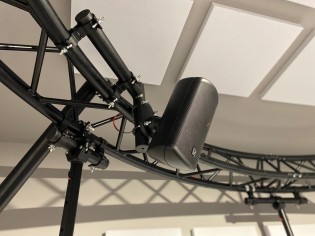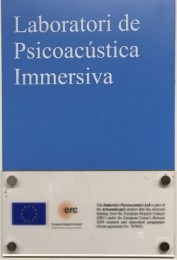 In this very first experiment to be carried out in our brain-new Immersive Psychoacoustics Lab (immpaLAB) by early-stage researcher Samantha López-Mochales, we are setting up the probe of concept of our experimental approach to test the role of environmental acoustics in ancient rock art sites to shape human experience.
In this very first experiment to be carried out in our brain-new Immersive Psychoacoustics Lab (immpaLAB) by early-stage researcher Samantha López-Mochales, we are setting up the probe of concept of our experimental approach to test the role of environmental acoustics in ancient rock art sites to shape human experience.
The immpaLAB is a twenty-five square meter facility located in the premises of the Faculty of Psychology of the University of Barcelona. It is built as a soundproof and semi-anechoic cabin optimal for auralization experiments, in which participants can feel immersed in any tailored acoustic environment, thanks to its 16-channel 3D spherical loudspeakers array (see Figure).
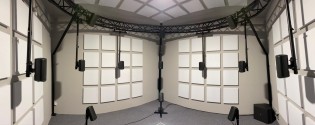
In the experiment “Perceptual and emotional responses to rock art soundscapes of Altai (Russia)”, we will measure participants’ perceptual and emotional reactions -using several bipolar adjective scales- to natural sounds (animal calls, thunder, wind, rain, etc.), convolved with the acoustic signature of the rock art natural soundscapes of the Russian region of Altai.
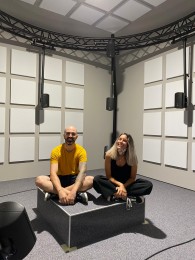
The construction of the immpaLAB started in early 2020, but was interrupted by the Covid-19 pandemics, to be completed in July 2020. The immpaLAB is an initiative of the Artsoundscapes project, led by Prof. Margarita Díaz-Andreu, an ERC-Advanced grant which aims at the phenomenological understanding of the role of sound and emotion in engagement with the sacred in the rock art landscapes of premodern Holocene societies. In the Artsoundscapes project’s fieldwork campaigns, we record the acoustic print of places of archaeological interest worldwide and combine them with any sound to immerse listeners into the desired acoustic environments. Using this technique, psychoacousticians can measure the individual reaction and subjective interpretation that listeners attribute to sound, and the affective responses evoked on them, which has been, during the last few years, a focus of the field of Psychoacoustics (Valenzuela et al., 2020).
Apart from auralization, the immpaLAB offers multiple possibilities to play with sound localization and sound source movement. And most important, we plan to implement in the near future, the use of virtual reality applications. This will be possible because of the use of photogrammetry in the Artsoundscapes fieldwork campaigns, to register the shape of the surfaces where rock art is located, which allows reproducing the actual landscape’s 3D view to increment the immersion of the participants in the environment.
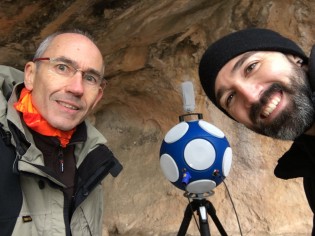
For further readings about the rationale behind this kind of experiments, see:
Valenzuela, J., Díaz-Andreu, M., Escera, C. (2020). Psychology Meets Archaeology: Psychoarchaeoacoustics for Understanding Ancient Minds and Their Relationship to the Sacred. Frontiers in Psychology, 11. https://doi.org/10.3389/fpsyg.2020.550794.
For further readings about the immpaLAB, see:
https://www.ub.edu/artsoundscapes/immpalab-immersive-psychoacoustic-laboratory/


